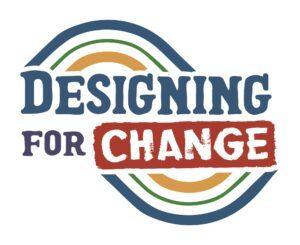
The Legacy of Radical Art Education in Chicago’s History

# The Power of Arts Education: Hull-House and Chicago’s Progressive Legacy
**CHICAGO** — Who is art really for? This question sits at the core of two compelling exhibitions that explore the transformative influence of progressive art education in Chicago. As the art world increasingly leans toward luxury and exclusivity — with artworks priced in the millions, skyrocketing tuition at art schools, and museum tickets bordering on $30 — it can feel as though art is a luxury reserved for the wealthy. But this perception is as far from the truth as can be: art, in its truest essence, is for everyone.
Indeed, two perennial Chicago exhibitions underscore this very point — by showcasing the humanizing impact of art education across various communities. Both exhibits dive into historically grounded, yet radically progressive, instances of art education’s potential to act as a tool for social equality and empowerment.
## Hull-House: The Birthplace of Radical Arts Education
Founded in 1889 by social reformers Jane Addams, Ellen Gates Starr, and Mary Keyser, the Hull-House settlement aimed to offer new immigrants not just practical services — like employment resources and public kitchens — but also access to the enriching potential of art. Situated in a crowded and working-class immigrant community on Chicago’s Near West Side, Hull-House embodied the idea that art was as important to a well-rounded life as food, education, and shelter.
At a time when Chicago was growing at a breakneck pace and industrialization was blurring the lines between traditional craftsmanship and mass production, Hull-House thrived on an unwavering dedication to embedding art and crafts within everyday life. The settlement expanded to include 13 buildings, with an art gallery being one of its earliest additions. Whether through ceramics workshops, textiles, or metalwork demonstrations in the Hull-House Labor Museum, immigrants found that art gave them the opportunity not just to preserve their cultural heritage, but also to bring dignity and pride into their lives.
The legacy of Hull-House was illuminated at the Jane Addams Hull-House Museum in the exhibit *Radical Craft: Arts Education at Hull-House, 1889-1935.* The show profoundly honors the settlement’s emphasis on cultural empowerment via craft and art education. Visitors are greeted with curated displays of historical artifacts, such as vibrant ceramics made by artisans using Hull-House kilns, and intricate textiles crafted by immigrant weavers. The display recalls the era when Hull-House was buzzing with creativity, acting as a hub of learning and empowerment for working-class Chicagoans.
### Craft Meets Community — Then and Now
One particularly eye-catching aspect of this exhibition is the showcase of crafts that reveal Hull-House’s mission to connect industrialized Chicagoans to their traditional roots. Starr’s role in establishing a bookbindery underscored her belief in the importance of maintaining craft traditions — not merely as professional development, but as a means of social integration and self-expression. Starr, much like Addams, understood that art had the radical power to transform both personal and collective identities.
The exhibit at Hull-House not only looks back on history but links to current discourses around art and access. The skills learned and the pieces created were never just about aesthetics; they were about survival, pride, and community. The Hull-House ceramic kiln, for instance, was a way for Mexican immigrants fleeing the revolution to sustain themselves. Yet, when mass-manufactured pottery began flooding the market in the 1930s, the handmade ceramic tradition faded. Displays like these highlight how swiftly changing economies and ideas of value could impact the livelihoods of artisans engaged in the community.
## Contemporary Art Education at Gallery 400: Beyond the Classrooms
*Learning Together: Art Education and Community* at Gallery 400 shifts the lens toward more recent decades — from the 1960s to the 2010s — in which Chicago has remained a key battleground for progressive arts education. As public funding ebbed and flowed, schools in the city’s under-resourced districts faced not only a loss of art programs but also the loss of a cultural foundation that could equip future generations with confidence, creative thinking, and resilience.
This exhibition not only takes us through traditional classroom projects but also demonstrates how community organizations have played crucial roles in facilitating arts education that has been stripped from the public education system. Whether through murals on Chicago public school walls or collaborations between professional artists and students, the show underscores the myriad ways that art can be a liberative force for individuals and communities alike.
Tellingly, Gallery 400 also spotlights the history behind the Chicago Public Art Group (CPAG). Since its formation in 1972, CPAG has believed that public art can mirror community narratives. Examples of their work included collaborations with high school students that produced large murals in downtown Chicago with global art stars, such as Keith Haring in 1989.
An especially striking element of *Learning Together* is the case of Arthur Dixon Elementary School